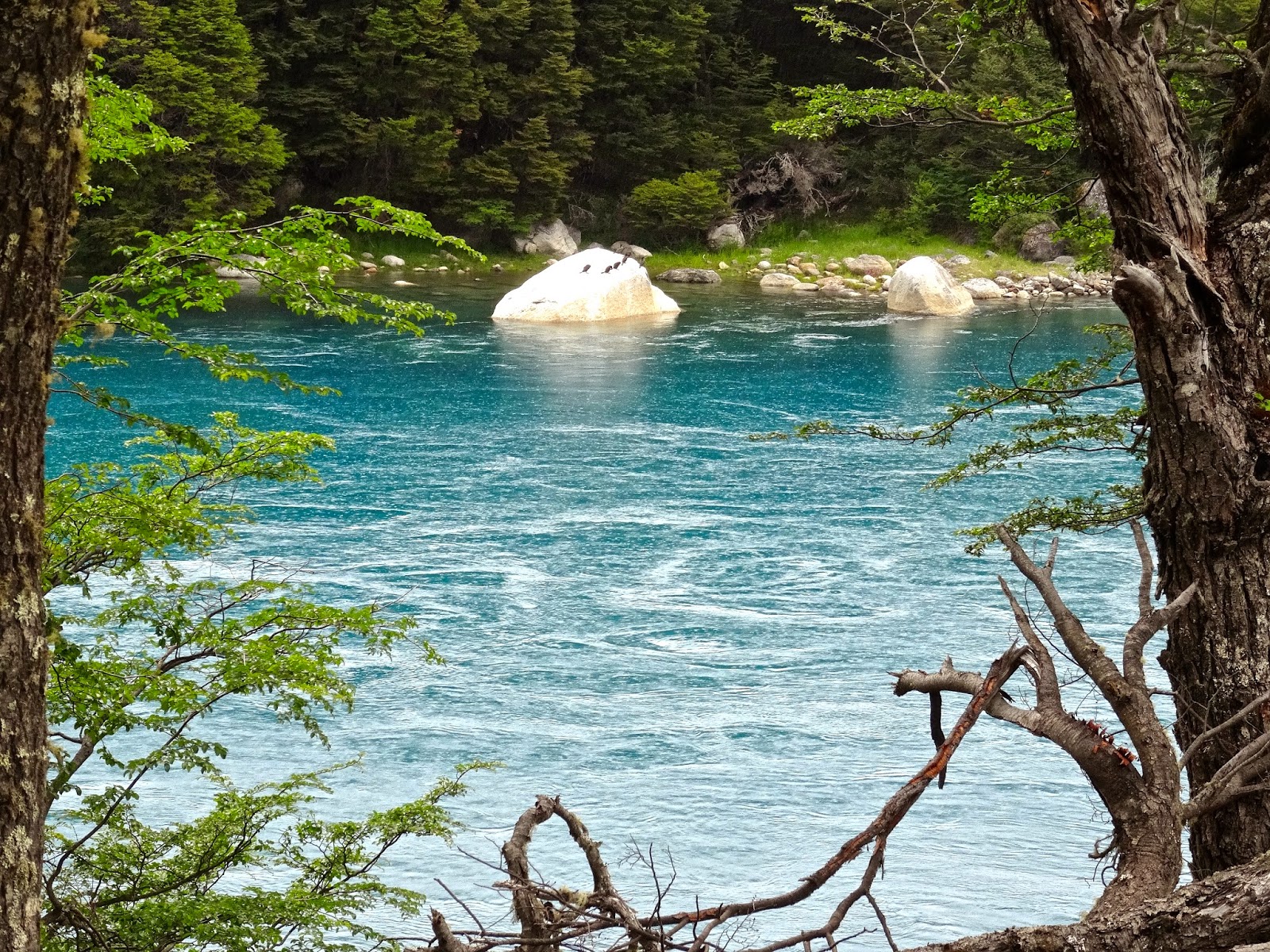Back on the road again after a few days of van repair in Coyhaique! South to hike into the Cerro Castillo wilderness and see some stone and ice castles!
 |
| Cerro Castillo, the hanging glaciers and the Ibáñez River Valley |
 |
| Lake at the foot of Cerro Castillo that used to be a glacier. |
 |
| Cerro Castillo (2675m, 8,776 ft) is the highest and most distinctive peak in the central Patagonian Andes |
 |
| The road got a little wet... |
From Cerro Castillo, we journeyed further on the Carretera Austral as far South as we had time to go - Cochrane, which is the last district crossed by the Southern Road. The drive was a rough dirt highway, but incredible scenery and beautiful places to pull off the road and sleep in the van!
 |
| Beautiful rivers are our constant companions -and make for awesome campsites! |
 |
| Gaucho |
 |
| Camp for the night, here? Yes, please! |
 |
| We begin to see signs of leaving mountains and entering desert. |
 |
| The lakes and rivers never cease to amaze! |
 |
| I don't think that wall is really holding any rocks back...just an observation. |
 |
| Chile Chico, Chile - we pass through the gates to exit Chile and enter Argentina. |

 |
| Chaltén, Argentina - Mt. Fitz Roy in the background. |
 |
| Bush camping on a wind-whipped lake. |
 |
| Patagonian Ostrich - the rhea - roam the Patagonian steppes and deserts. Here is one with her babies. |
 |
| Mt. Fitz Roy peak |
 |
| We approach the Fitz Roy range |
 |
| Wow! The Germans have us beat! |
-----
Van Updates:
1. Fuel pump is repaired. Mike the Mechanic discovered that the wire had not been installed property (Weird! Things on our van weren't installed properly? Huh!) and it had become disengaged. It has been re-engaged and fuel is flowing.
2. A support bar has jarred loose and is banging around under the van. It sounds awesome. Mike went for the tried and true method of duct tape and hose clamps for the first attempt. Immediately fell out again. Next is to build a new rubber gasket/bumper thingy from a bike tube that will be tighter. And stay in. Hopefully.
3. Anti-lock brakes are groaning. Unclear on the problem. Other than the fact that they are apparently deeply distressed. I think they're depressed, personally.
4. There has begun a random, occasional tapping in the engine region of the van. It goes away after a few minutes of revving the engine. In the list of triages this is currently a hang nail, because it goes away. I hope that is an accurate assessment.






















































